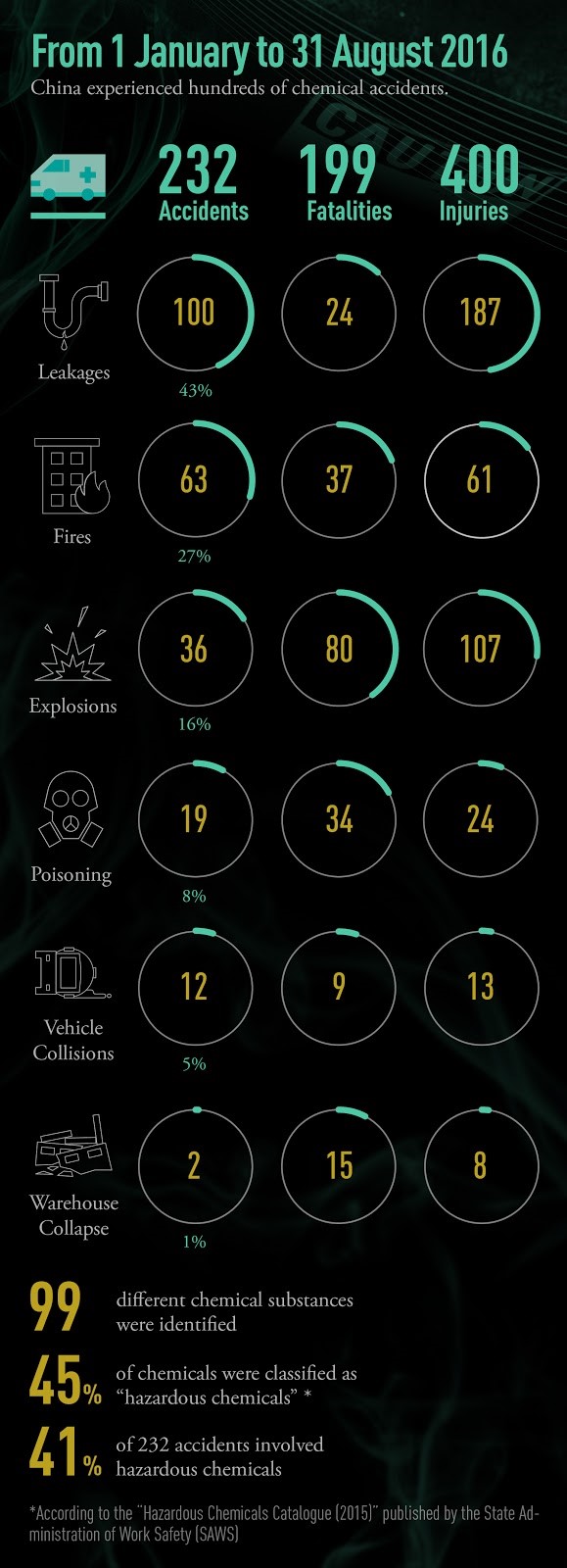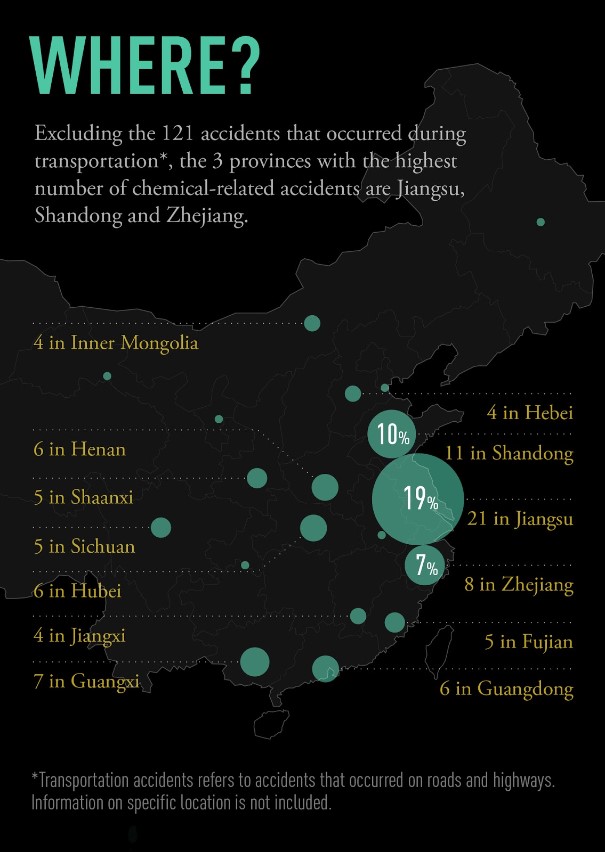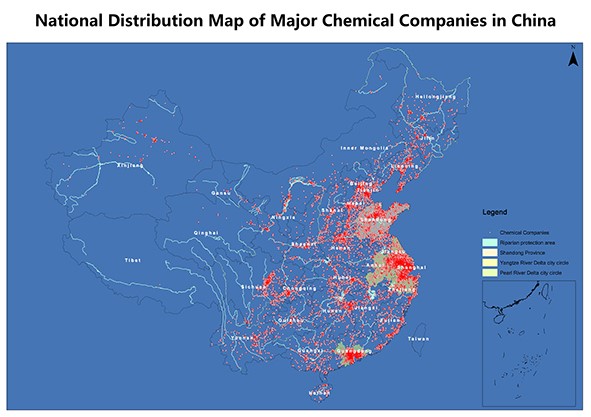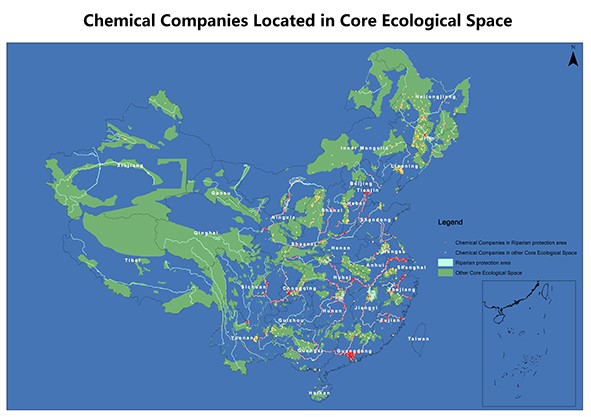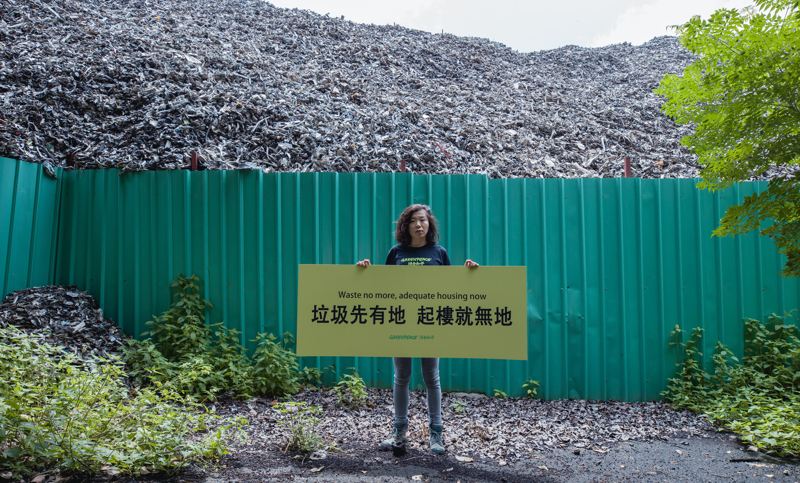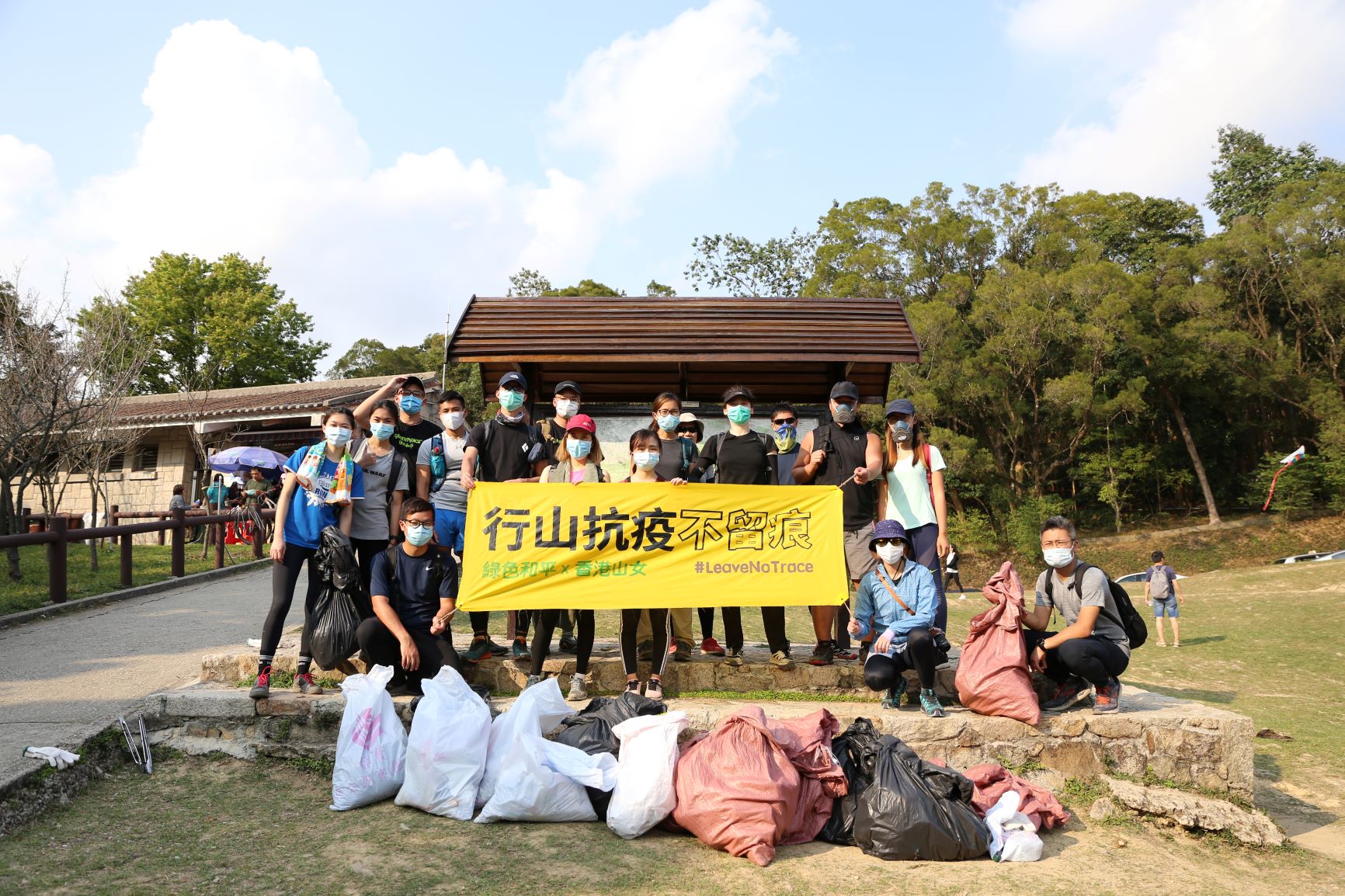China’s chemicals industry appears occasionally in the news, but we tend to only hear about it in extreme cases, when footage of enormous explosions circulate around the world, or hundreds of children fall sick. These incidents are shocking, but they’re just the tip of the iceberg. Beyond the headlines, chemical accidents are so frequent in China that they have become a routine occurrence.
The reality is, China’s chemicals management system is dangerously lax- a fact that becomes even more alarming once you consider the size and scale of the country’s chemicals industry. China is the biggest consumer and manufacturer of chemicals in the world, with over 25,000 large-scale chemical companies using over 45,000 types of officially registered chemicals.
But information on this industry is frustratingly sparse. Time and time again, when examining China’s chemicals industry, one problem has consistently appeared: a glaring lack of transparency.
So we decided to work out what the true scale of the problem is. Using all the publicly accessible information we could find, from official government data and monitoring the news, Greenpeace East Asia has tallied up all the separate accidents that occurred in China so far this year and mapped the locations of chemicals facilities across China.
What we discovered painted a bleak picture:
China has averaged 29 chemical accidents a month in the first 8 months of 2016 alone causing the deaths of 199 people and 400 injuries.
Put into context, that averages to 1 death or injury every 10 hours.
While the causes of the accidents varied- 43% of accidents came from chemical leaks, while 27% were caused by fires, and explosions 16%. 52% of accidents happened while the chemicals were being transported, while 27% occurred during production- there was a common thread of negligence, lack of information and oversight.
Save for the huge proportion of accidents that occurred in transit for which there was no location data, most of the accidents happened in densely populated and industry-heavy areas, such as eastern Jiangsu Province, where 21% of 2016’s accidents occurred.
Mapping China’s chemicals facilities
Using all the publicly accessible information we mapped the distribution of 33,625 chemicals companies in total, revealing another worrying trend. Many of China’s chemicals facilities are also concentrated in the areas with highest population density.
What’s more, 5,339 of China’s major chemicals companies operate in core ecological areas and more than half are located within 2km of major rivers, posing significant risk to human health and the environment.
However, this is far from a clear picture. Government statistics on locations of chemicals industries only go up to 2011. No information on the locations of chemicals facilities has been made public for 5 years. As it stands, people have no way of knowing whether they are living and working in close proximity with potentially dangerous chemicals facilities.
Where do we go from here?
We’ve been living too long under this sickening status quo. At least 199 lives have been needlessly lost this year alone to this vast and deep-rooted problem and the only way to even begin tackling it is by ensuring transparency in the industry.
That’s why the next phase in the mapping is so important. We are creating a user-generated mapping system that will allow the public to contribute and scrutinise information on the whereabouts of chemicals facilities in their areas. we can start to fill in the information gaps and fully understand the true extent of China’s chemicals problem and move towards a safe future.
As China’s chemicals industry grows, so too does the potential to do enormous harm to public health and environmental safety. Change needs to happen and it needs to happen fast. Both the government and the chemicals industry have a duty to take precautionary action and provide us with the information necessary to protect ourselves and our environment. Until they do, it falls to us to seek the truth for ourselves.
Watch this space.
Cheng Qian Assistant Manager of the Toxics campaign at Greenpeace East Asia

